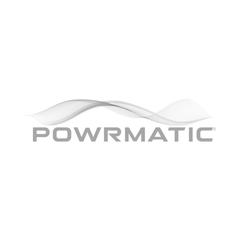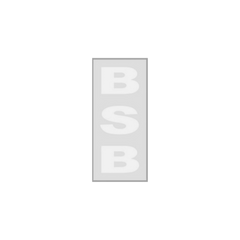Bestsellers
Shop All
FSD-C Series - Galavanised Steel Blades, Installation Plate (IP)
From £67.66 excl. VATUnit price excl. VAT /UnavailableGrille for Lobby Damper/ Natural Lobby Damper (White)
From £122.18 excl. VATUnit price excl. VAT /UnavailableFSD-C series - Galavanised Steel Blades, Installation Plate (IP) & Rotatable Cleats (R-CL)
From £85.10 excl. VATUnit price excl. VAT /UnavailableFD-C Series - Galvanised Steel Blades, Installation Plate (IP)
From £59.23 excl. VATUnit price excl. VAT /UnavailableRVC Series - Galvanised Steel Blades, Hand Operated
From £30.46 excl. VATUnit price excl. VAT /UnavailableBSB ACP Addressable Damper Control Panel
Please contact us for pricing on 01322 388830
FSD-TD Series - Type C, Galvanised Steel Blades, Easy Fix Angle Frame (AF)
From £157.83 excl. VATUnit price excl. VAT /UnavailableFSD-TD Series - Type S, Galvanised Steel Blades, EASY FIX Angle Frame (AF)
From £198.88 excl. VATUnit price excl. VAT /UnavailableHD Series - Flangefit, Galvanised Steel Blades, Hand Operated/Extended Spindle
From £45.23 excl. VATUnit price excl. VAT /UnavailableVC Series - Spigotfit, Galvanised Steel Blades, Hand Operated/Extended Spindle
From £29.09 excl. VATUnit price excl. VAT /UnavailableFD Series - Type B, Galvanised Steel Blades Out of Airstream, Angle Frame (AF)
From £50.00 excl. VATUnit price excl. VAT /UnavailableFD Series - Type A, Galvanised Steel Blades In Airstream, Angle Frame (AF)
From £50.00 excl. VATUnit price excl. VAT /UnavailableBD Series - Flangefit and Framefit, Aluminium Blades
From £38.38 excl. VATUnit price excl. VAT /UnavailableVC Series - Flangefit, Galvanised Steel Blades, Hand Operated/Extended Spindle
From £25.93 excl. VATUnit price excl. VAT /UnavailableVC Series - Circular Spigotfit, Galvanised Steel Blades, Hand Operated/ Extended Spindle
From £35.49 excl. VATUnit price excl. VAT /UnavailableFD Series - Type C, Galvanised Steel Blades Out of Airstream, Angle Frame (AF)
From £58.18 excl. VATUnit price excl. VAT /UnavailableBD Series - Circular Spigot, Alumium Blades
From £44.67 excl. VATUnit price excl. VAT /UnavailableHD Series - Circular Spigotfit, Galvanised Steel Blades, Hand Operated/ Extended Spindle
From £61.95 excl. VATUnit price excl. VAT /Unavailable
General Information
General Information
Modern buildings depend on dampers to achieve fire safety, smoke control and efficient ventilation systems. The airflow management and ducted systems compartmentation function of dampers enable both safety and comfort systems to operate effectively. Smoke and fire variants are specified and tested to BS EN 1366 and coordinated with the alarm system to ensure timely closure. The selection process takes into account three main factors: Casing leakage, blade sealing and pressure drop.
The installation process needs both access to the blades and proper sealing of ducts and partitions to achieve fire resistance. Correct blade orientation is another critical element to ensure compliance. The commissioning process needs to confirm that the system shows correct positions and that actuators function properly and the control panel and BMS system report correctly. The use of documented maintenance procedures enables organisations to sustain asset reliability from start to finish of operational life. The dampers serve functions that go beyond simple airflow control because they play a crucial role in meeting various British and European standards for safety and performance and sustainability.
In terms of safety, Dampers are rigorously tested under BS EN 1366-2, which specifies fire resistance tests for dampers, ensuring that they can withstand elevated temperatures and maintain compartmentation in the event of a fire. Smoke control dampers operate under BS EN 12101-8 standards which define the requirements for smoke control system construction and performance to ensure proper smoke extraction and emergency evacuation safety. These requirements are aligned with UK Building Regulations Approved Document B (Fire Safety), which sets out the mandatory measures for fire resistance, smoke containment, and life protection. The BS 9999 standard establishes guidelines for building design and management fire safety which includes dampers as critical elements for risk-based fire protection strategies.
From a ventilation and energy-saving perspective, dampers also contribute significantly to compliance with Approved Document F of the UK Building Regulations, which covers ventilation requirements for indoor air quality. The system uses high performance dampers to prevent air leaks which enables efficient distribution of conditioned air throughout the building while minimising energy waste. The Ecodesign Directive (EU Regulation 1253/2014), which remains in effect in the UK after Brexit requires energy-efficient design for ventilation units and their associated components. The implementation of dampers for system efficiency optimisation results in financial savings and decreased carbon emissions, which helps organisations meet their sustainability targets for BREEAM and BREEAM certification (LEED may be referenced in international projects but BREEAM is the UK standard) certification.
Dampers find practical applications across
different sectors that include commercial office buildings, healthcare facilities, educational institutions and industrial environments. The equipment serves two main purposes in hospitals and laboratories because it helps create sterile environments and prevents smoke from spreading. The implementation of energy performance standards together with life safety requirements in residential and mixed-use developments results in compliance which ensures safety for building occupants. The main purpose of dampers in modern HVAC and fire protection systems consists of two essential functions, which include airflow management and smoke isolation and operational reliability during emergencies.
The final product of Dampers represents a
perfect blend between modern engineering techniques and safety standards and energy-efficient design principles. The investment in these systems provides essential benefits for both risk management and compliance requirements and long-term operational efficiency and sustainability of buildings throughout the UK and European regions.
Frequently Asked Questions
What is a damper?
What is a damper?
A damper is a mechanical device designed to control the flow of air or gas through ducts, chimneys, or pipelines. Acting like a precision-built valve, it can adjust airflow, pressure, or temperature to maintain the right conditions in HVAC, industrial ventilation, or process systems. In many installations, dampers are essential for achieving efficient performance, improving energy use, and ensuring safety compliance.
How does a damper work?
How does a damper work?
A damper uses one or more blades—mounted within a frame—that rotate to open, close, or partially restrict airflow. By adjusting these blades, the damper controls how much air or gas passes through a section of the system. Some dampers are designed for simple open/close control, while others modulate flow continuously for fine-tuned performance. This level of control helps optimise system efficiency, maintain consistent environmental conditions, and protect critical equipment.
What are the different types of dampers?
What are the different types of dampers?
Dampers come in a variety of designs, each suited to specific applications:
- Volume Control Dampers (VCDs): Adjust airflow to balance HVAC systems.
- Fire Dampers: Automatically close during a fire to prevent flames and smoke from spreading.
- Smoke Dampers: Contain smoke in designated areas during an emergency.
- Combination Fire/Smoke Dampers: Offer dual protection against both flames and smoke.
- Backdraft Dampers: Allow air to flow in one direction only, preventing backflow.
- Blast Dampers: Protect systems from explosive overpressure events.
Where are dampers required?
Where are dampers required?
Fire dampers are typically required wherever ductwork penetrates walls, floors, or partitions with a fire-resistance rating of two hours or more. They must also be installed in all non-ducted air transfer openings in rated walls, regardless of the wall’s rating. Compliance ensures that in the event of a fire, flames and smoke are contained, protecting both people and property.
What should engineers verify about leakage class and casing tightness when specifying Dampers?
What should engineers verify about leakage class and casing tightness when specifying Dampers?
Engineers must confirm compliance with BS EN 1751 for leakage and casing tightness and check fire performance against BS EN 1366. Specifications should include orientation, sealing to partitions or ducts, and correct fixings. Commissioning must verify closure time, feedback, alarm interface, and pressure effects. Records of certificates, leakage class, and inspection intervals should be kept in the O&M logbook.
This answer references a standard(s) that are relevant. There may however be many other standards that need to be considered. We recommend you refer to our technical bulletins for more detailed references to applicable standards but also you should check with your professional consultants and the approving authorities prior to purchasing to check compliance.
Please see the Dampers Technical Bulletin for more information.
During installation, how should contractors handle BS EN 1366 fire testing evidence on Dampers?
During installation, how should contractors handle BS EN 1366 fire testing evidence on Dampers?
Contractors must ensure that dampers are installed strictly in line with tested configurations from BS EN 1366 reports. This includes maintaining orientation, partition sealing, and correct fixings. On-site checks should confirm alignment with fire test details, with functional closure and leakage tests forming part of commissioning.
Traceability records and test evidence should be added to O&M documentation.
This answer references a standard(s) that are relevant. There may however be many other standards that need to be considered. We recommend you refer to our technical bulletins for more detailed references to applicable standards but also you should check with your professional consultants and the approving authorities prior to purchasing to check compliance.
Please see the Dampers Technical Bulletin for more information.
Which standards or guidance affect actuator failsafe selection (spring-return) for Dampers?
Which standards or guidance affect actuator failsafe selection (spring-return) for Dampers?
Actuator selection must comply with the fire strategy outlining compliance with ADB, BS 9999 and test standards BS EN 1366. Failsafe (spring-return) actuators should be specified where life safety or smoke control requires reliable closure on power loss.
Commissioning should verify closure under both normal and failsafe conditions.
This answer references a standard(s) that are relevant. There may however be many other standards that need to be considered. We recommend you refer to our technical bulletins for more detailed references to applicable standards but also you should check with your professional consultants and the approving authorities prior to purchasing to check compliance.
Please see the Dampers Technical Bulletin for more information.
What common mistakes occur with position indication and end-switches on Dampers, and how can they be avoided?
What common mistakes occur with position indication and end-switches on Dampers, and how can they be avoided?
Mistakes include not wiring end-switches to the fire alarm system, failing to check actual blade position against signal status or overlooking accessibility for inspection. To avoid these, designers must specify switch requirements clearly, installers must ensure correct wiring and sealing and commissioning must test signals under real alarm scenarios.
How does installation orientation and blade direction influence commissioning and sign-off for Dampers?
How does installation orientation and blade direction influence commissioning and sign-off for Dampers?
Orientation errors (e.g. reversed blade direction) can compromise leakage performance and fire resistance. Correct installation ensures dampers close against airflow as intended. Commissioning should confirm that blades seal properly and that pressure drop matches design expectations.
What evidence should be recorded in O&M packs regarding sealing to duct and partition for Dampers?
What evidence should be recorded in O&M packs regarding sealing to duct and partition for Dampers?
O&M packs should include details of sealing methods, approved fire stopping systems, and photos verifying installation. Certificates for fire-rated sealants or collars, together with inspection sign-off, should be included to demonstrate compartment integrity.
In retrofit projects, how are access doors for reset and maintenance typically approached for Dampers?
In retrofit projects, how are access doors for reset and maintenance typically approached for Dampers?
Access must be planned early to ensure dampers can be inspected, reset and maintained. In retrofit situations, additional access panels may be required, sized and located in accordance with manufacturer recommendations. These provisions should be documented with drawings and photos in the O&M file.
What site constraints limit pressure drop and system effect with Dampers, and how can these be mitigated?
What site constraints limit pressure drop and system effect with Dampers, and how can these be mitigated?
Tight duct layouts or poorly considered damper placement can increase pressure drop. Mitigation includes allowing adequate straight duct runs, selecting dampers with appropriate aerodynamic performance, and verifying system effect during commissioning airflow tests.
How can teams troubleshoot issues arising from alarm interface and cause & effect on Dampers?
How can teams troubleshoot issues arising from alarm interface and cause & effect on Dampers?
Issues often arise from misconfigured fire alarm cause & effect logic, such as dampers not receiving the correct close signal. Troubleshooting involves reviewing the fire strategy matrix, verifying wiring against drawings and carrying out witnessed alarm interface tests.
What safety measures relate to fire stopping and partition integrity when working on Dampers?
What safety measures relate to fire stopping and partition integrity when working on Dampers?
When installing or servicing dampers, teams must maintain compartment integrity with certified fire stopping products. Works should follow hot-works permits where needed, use safe access methods and ensure dampers are securely locked off before adjustment.
What should engineers verify about closure time when specifying Dampers?
What should engineers verify about closure time when specifying Dampers?
Closure time must meet the project fire strategy, compliance with BS9999, ADB and BS EN 1366 test requirements. Engineers should verify actuator performance curves at design and ensure commissioning measures actual closure times under airflow conditions.
This answer references a standard(s) that are relevant. There may however be many other standards that need to be considered. We recommend you refer to our technical bulletins for more detailed references to applicable standards but also you should check with your professional consultants and the approving authorities prior to purchasing to check compliance.
Please see the Dampers Technical Bulletin for more information.
During installation, how should contractors handle certification, labelling, and traceability on Dampers?
During installation, how should contractors handle certification, labelling, and traceability on Dampers?
Each damper must be installed with its unique identification label intact. Contractors should cross-reference damper IDs with certificates and schedules, ensuring traceability through drawings and O&M packs. Missing labels or untraceable dampers can compromise compliance.
Which standards or guidance affect inspection frequency and logbooks for Dampers?
Which standards or guidance affect inspection frequency and logbooks for Dampers?
Inspection frequency should align with BS 9999 guidance and project fire safety strategies, typically requiring annual inspection at minimum. Logbooks must record inspection results, functional tests, and maintenance actions for each damper.
Special consideration should be given to High-Risk Residential Buildings (HRRBs) where more frequent testing may be required under the fire strategy or statutory guidance.
This answer references a standard(s) that are relevant. There may however be many other standards that need to be considered. We recommend you refer to our technical bulletins for more detailed references to applicable standards but also you should check with your professional consultants and the approving authorities prior to purchasing to check compliance.
Please see the Dampers Technical Bulletin for more information.
What common mistakes occur with smoke vs. fire damper roles, and how can they be avoided?
What common mistakes occur with smoke vs. fire damper roles, and how can they be avoided?
Confusion arises when dampers intended for smoke control are installed as fire dampers or vice versa. To avoid this, engineers must clearly specify damper type and classification, and contractors must verify against BS EN 1366 test evidence and product data sheets.
This answer references a standard(s) that are relevant. There may however be many other standards that need to be considered. We recommend you refer to our technical bulletins for more detailed references to applicable standards but also you should check with your professional consultants and the approving authorities prior to purchasing to check compliance.
Please see the Dampers Technical Bulletin for more information.
How does high-velocity duct performance influence commissioning and sign-off for Dampers?
How does high-velocity duct performance influence commissioning and sign-off for Dampers?
High velocities can cause blade chatter, delayed closure or increased leakage. Dampers must be selected for rated velocity and tested under design airflow during commissioning to prove reliable performance.
What evidence should be recorded in O&M packs regarding manual release provisions for Dampers?
What evidence should be recorded in O&M packs regarding manual release provisions for Dampers?
O&M documentation should confirm location, accessibility and correct operation of manual release devices. Functional tests demonstrating safe manual release should also be logged.
In retrofit projects, how is BMS status mapping and alarms typically approached for Dampers?
In retrofit projects, how is BMS status mapping and alarms typically approached for Dampers?
Integration with BMS must include mapping of open/closed status, end-switches and alarms. In retrofit work, this may involve reconfiguring points and updating cause & effect documentation. Witness testing ensures the BMS reflects true damper state.
What site constraints limit acoustic impact and breakout with Dampers, and how can these be mitigated?
What site constraints limit acoustic impact and breakout with Dampers, and how can these be mitigated?
Dampers close to occupied areas can cause noise due to turbulence. Mitigation includes careful placement, acoustic lining and selection of low-leakage models. Acoustic breakout should be checked during commissioning.
How can teams troubleshoot issues arising from multi-damper coordination on risers?
How can teams troubleshoot issues arising from multi-damper coordination on risers?
Problems include multiple dampers closing simultaneously, causing high pressure surges. Solutions involve staged closure sequences or dampers with controlled actuators. Testing should confirm coordination between dampers on shared risers.
What safety measures relate to retrofit into existing shafts when working on Dampers?
What safety measures relate to retrofit into existing shafts when working on Dampers?
Retrofits must protect compartmentation by using approved sealing methods. Safety controls include lock-off during adjustment, safe working at height where shafts are deep and hot-works management. All works should preserve the fire resistance of the shaft.











































